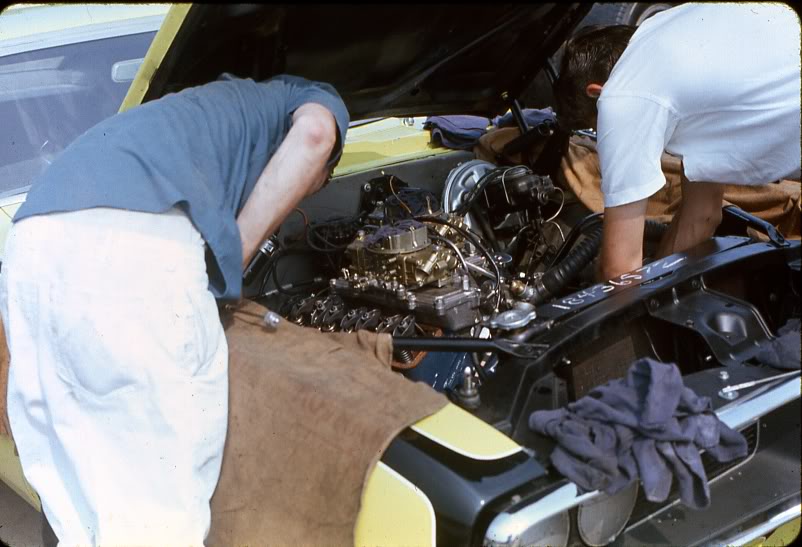-
Administrator

Internals, Externals, Cooling:
I haven’t assembled many of the engine parts yet, only a 3 inch Eagle crank which I purchased from Shane Johnson at Segedins. Shane has been great to work with and really knows his stuff. I told him what I intended to do with the car, ie, to eventually take it to Europe, and he got me to ask Eric Broutin (in France) all the right questions about his motor, and the fuel he uses. Eric runs his car on 98 octane fuel, which is available at service stations. Most race tracks in Europe supply 103 octane, but its about three times the price.
Shane asked whether the fuel used in Europe is RON (research motor octane) or MON (motor octane number). Our New Zealand fuel is 98 MON which is around the same as 90 RON. Eric said their fuel is 98 RON, so we’ll build the motor using parts based on this octane level, so I don’t have to tear it all apart if/when we go to Europe.
For cooling, alloy radiators didn’t appear in the Trans-Am series until around 1971, therefore I will almost certainly need to fit a copper/brass item to my car.
In addition, I’ll need to use the correct tin valve covers, as alloy valve covers didn’t appear until the 1970s. Its all about making the car look right.
Al Bartz built the motors for Terry Godsall Racing in 1968, and for T/G Racing in 1969. Engine builders such as Bartz, TRACO etc, usually had their own corporate colour they’d paint the engines they built. It was like an extension of their company logo, or like an artist signing one of their paintings. TRACO were light grey. Bartz were navy blue, with a Bartz tag on the valve covers. Therefore, my motor will be navy blue.
This Ron Lathrop photo shows the engine bay of the Craig Fisher Firebird at Bryar in 1968. This is a great shot in that it clearly shows the cross ram intake, the navy blue of the engine, plus the fact the car used stock type rockers.

Ron Lathrop photo courtesy CRG website.
My car will probably only have around 400 – 450hp when I’m done, which is obviously way down on the HMC cars with their bigger engines and aftermarket blocks and heads. In period, the top factory supported Trans-Am teams were up in the high-400s. By 1969, the Penske Camaros were thought to have somewhere in the region of 470 – 495 horsepower. But that’s fine with me. Regardless of whether I was building an HMC car or period correct Appendix K car, I don’t have the budget to be running at the front. For me the enjoyment is in researching and building a car that is fully period correct.
Regardless, there will always be someone running around at the same speed as me. I think it was Graham Hill who was once quoted after having had a poor qualifying session and was starting down the back, “people down the back of the grid are much friendlier than those at the front”.
 Posting Permissions
Posting Permissions
- You may not post new threads
- You may not post replies
- You may not post attachments
- You may not edit your posts
-
Forum Rules






 Reply With Quote
Reply With Quote